Cats
Top 50 Frequently Asked Cat Questions
The 50 Most Popular Cat Questions and Answers, In Order of Popularity
We’ve put together a list of the 50 most Popular Cat Searches in Google each month with an answer from one or two of the cat experts, as well as a link to their website where you can find more information.
WHY DO CATS PURR?
1st Most Popular Search with 40,500 searches per month
Purring is just one of many ways a cat conveys its feelings. Animal experts suggest the main reasons that your cat is purring is:

- Contentment – indicates your cat is happy and relaxed.
- Signalling Friendship – some cats will purr when approaching other cats.
- Distress or Pain – purring is thought to be self-comforting to the cat.
- Mother & Kitten – a nursing kitten will reassure the mother cat that all is well, mother often purrs back.
- Hungry – some cats will let you know they are hungry by purring, it may sound a little different to their usual purr, and it’s believed that humans respond to this sound.
Reference
- http://www.drsfostersmith.com/pic/article.cfm?aid=892
- http://www.purina.com.au/cats/behaviour/purring
- http://pets.webmd.com/why-do-cats-purr
HOW LONG DO CATS LIVE?
2nd Most Popular Search with 22,000 searches per month
The average age of a cat living indoors is 12-15 years. The average age for a cat living outdoors can be as little as 2 – 5 years.

The oldest cat named Crème Puff from Austin Texas lived to the ripe old age of 38 years.
Tips to keep your cat living longer:
- Keeping your cat indoors
- Maintaining a healthy diet
- Regular Veterinary examinations, treating for worms and fleas
- Keeping active
- Dental care will help avoid nasty bacteria
Reference
- http://www.cat-world.com.au/how-long-do-cats-live
- http://www.care2.com/greenliving/how-long-do-cats-live.html
- https://www.somerzby.com.au/blog/how-keep-your-cat-safe-and-healthy/
HOW TO DRAW A CAT?
3rd Most Popular Search with 18,100 searchs per month
It’s a very popular question and we’re pleased to tell you that you’ll find a number of informative results on this page. I have provided links to 5 of the best online tutorials for How to Draw Cats, plus you’ll also see the answer to questions like “How to draw a Cartoon Cat” as well as “How to draw a Cat’s Face” further below.
Try for yourself and send us the results.
Top 5 Online “How to Draw Cats” tutorials include:
Reference
WHY DO CATS KNEAD?
4th Most Popular Search with 18,100 searches per month
A common behaviour amongst cats is the motion they make by pushing in and out with their paws, usually they will alternate between the left and right paws.
Animal experts suggest the following theories as to why cats knead:
- Kittens knead the mothers breast to stimulate lactation
- Adult domestic cats retain their juvenile behaviour of kneading the mother’s breast
- Instinctual behaviour, taken from their wild ancestors, cats prefer soft surfaces, kneading down the foliage makes a more comfortable place to sleep.
- A female kneads frequently just before going into heat as a signal to males of her willingness to mate
- Sign of contentment when being petted, may even be purring at the same time
Reference
HOW LONG ARE CATS PREGNANT?
5th Most Popular Search with 12,100 searches per month
The gestation period of a cat is between 60 and 67 days; around nine weeks.
This varies between cats though and anywhere between 60 and 70 days is normal.
Reference
WHY DOES MY CAT LICK ME?
6th Most Popular Search with 6,600 searchs per month
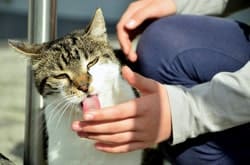
It is believed that cats groom and lick humans and felines as a way of displaying trust and affection.
However, other reasons as to why your cat may be licking you may be due to:
-
-
- Anxiety; some cats become so stressed that they start licking themselves or others compulsively
- Territorial rights; being licked is the first physical experience a cat remembers so cats will groom each other to share scents and remove debris.
- When your cat licks you, they are both cleaning and claiming you, just as they would for a feline friend or litter mate
-
Reference
WHY DO CATS SLEEP SO MUCH?
7th Most Popular Search with 4,400 searches per month

This question is commonly asked as cats sleep an average of fifteen hours a day, and some can sleep for up to 20 hours in a 24-hour period.
This behaviour is apparent as:
-
-
- Cats are crepuscular, meaning they are most active during the twilight hours of dawn and dusk and sleeping mostly when humans are awake. However, a cat is able to adjust its sleeping habits to enable them to spend more time with their loved ones, or to fit around their feeding schedules
- Felines are affected by the weather. It has been observed that cats sleep more when it is colder or raining.
- This sleeping habit is a result of cat’s evolution, nutritional habits and physiology. Sleeping assists cats in conserving energy between meals
-
Reference
WHY DO CATS MEOW?
8th Most Popular Search with 4,400 searches per month
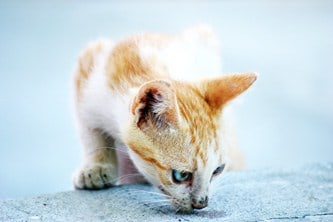
The reasons as to why cat’s meow, changes as they grow.
Kittens meow to their mother when they are hungry, scared or cold, but once they grow older this vocalisation changes to yowls, hisses and growls to communicate amongst each other.
Meowing is then reserved for communication with people.
Reasons as to why cat’s meow include:
-
-
- A form of greetings. Cats often meow when their owner returns home or when they meet them throughout the house
- Cats often meow when they are lonely, after spending many hours alone in a day
- When cat is experiencing stress they become more vocal. This may occur with the introduction of a new pet or baby, a move or changes to the home, illness or the loss of an owner
- As cats age, they may become increasingly vocal. Just as humans, cats can suffer from a form of mental confusion or cognitive dysfunction as they age leading to disorientation thus more meowing
-
Reference
-
-
- http://pets.webmd.com/cats/guide/cats-excessive-meowing
- https://www.petfinder.com/cats/cat-behavior-and-training/why-cats-meow/
- http://www.purina.com.au/cats/behaviour/meow?gclid=CLDPzpTihMkCFQukvQodkhIN7A
-
HOW TO GET RID OF FLEAS ON CATS?
9th Most Popular Search with 3,600 searches per month
The removal of fleas from your cat requires treating the cat as well as the cat’s environment. The treatment of fleas on your cat requires the killing of adult fleas as well as preventing any new eggs being hatched.
A range of flea control products are available, some work better than others. Shampoos and powders are generally less effective than repellent style products as they only last a few days.
Repellent-style products act on the flea once the flea bites into your cat’s skin where it will ingest the toxin or once the flea comes into contact with the cat’s skin.
Flea removal products for the environment include powders, flea bombs and sprays
-
-
- Flea collars are more effective to the neck and head area
- Shampoos aren’t a long lasting solution
- Flea powders are better at targeting the adult fleas
- Topical liquids are effective and available from your VET
- Treating the environment with flea bombs
- Regular cleaning and washing of cat beds and blankets
- Also treat any other pets that you may have at the same time
-
Reference
-
-
- https://www.lovethatpet.com/cats/questions/why-does-my-cat-still-have-fleas/
- http://www.cat-world.com.au/flea-control-for-pets-a-homes
-
HOW TO GIVE A CAT A PILL?
10th Most Popular Search with 3,600 searches per month

After carefully reading the dosage instructions, you’ll need a towel or blanket that can be used to help restrain the cat. With the help of a friend wrap the cat in your towel and place the cat on a table.
The pill should be placed in your dominant hand which leaves the other hand free to hold the cats head. Placing your hand over the cat’s forehead holding the cat firmly, tilting the head upright gently, you can use your finger to pull the cat’s jaw down which will open his mouth.
With the head still tilted back and the mouth now open you can drop the pill on the cats tongue. Aiming as far back as possible, with the pill now on the cat’s tongue you can close the jaw of your cat ensuring it stays shut for a few seconds to allow your cat to swallow.
-
-
- Ask for your friend’s help
- Offer your cat some water or food once the pill is swallowed
- Restrain your cat with a towel or blanket
- Always follow the dosage instructions
-
Reference
-
-
- http://icatcare.org/advice/how-give-your-cat-tablet
- http://www.wikihow.com/Give-a-Cat-a-Pill
-
WHY DO CATS HAVE WHISKERS?
11th Most Popular Search with 3,600 searches per month
A cat’s whiskers are a lot like a human’s touch receptors, they are also known as tactile hairs, or vibrissae and are primarily located on either side of your cats nose as well as the upper facial lip. Shorter whiskers are also found above the eyes, jaw line and the back of their front legs.
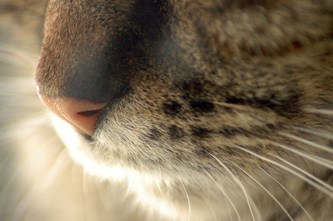
The cat’s whisker server as a sensory tool that helps your cat to feel its way around the environment. From a change in wind direction, measuring to see if he can fit into a tight space, or to be able to see it’s way in the dark.
-
-
- Never cut or trim your cat’s whiskers
- Whiskers are also found above the eyes, jaw, and front legs
- Are rooted very deep in the cat’s face
- Are two to three times thicker than the cat’s hair
- Are used to measure the width of an opening
-
Reference
HOW TO BATHE A CAT?
12th Most Popular Search with 3,600 searches per month
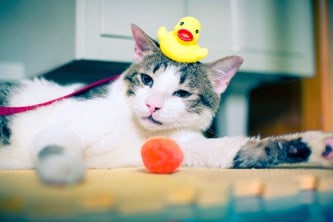
Generally, your cat won’t need a bath as they are very good at keeping themselves clean. But there are the odd occasion where they it makes good sense to give them a bath.
The most important steps to follow are listed below, but if you’d like a more detailed guide simple click on one of the links below the list to see a more comprehensive guide.
-
-
- As a precaution you may want to trim any sharp claws
- Brush your cats fur removing knots
- Use a specialist shampoo
- Prepare a large bucket or bath with just enough warm water
- Favourite toys or food treats work well as a distraction
- Apply a small amount of shampoo and lather up starting from the neck
- Avoid the eyes, ears, nose and mouth
- Rinse with warm water
- Face can be washed using a face washer
- Using a dry towel to gently remove as much water for her fur
- Allow your cat to fully dry in a clean warm room
- Reward your cat with a nice treat
- Younger and older cats may have fewer kittens
-
Reference
-
-
- http://www.purina.com.au/cats/care/grooming/bathing
- http://www.wikihow.com/Bathe-a-Cat
-
HOW LONG DO CATS STAY IN HEAT?
13th Most Popular Search with 2,900 searches per month
Cats go in heat for 4 – 10 days. The first heat cycle of your cat starts as sexual maturity, usually around the 6-month period, from then your cat will be in heat every few weeks during the breeding season. The breeding season lasts for six months between the spring and autumn seasons.
The heat cycle has three parts.
-
-
- 1 – 2 days – Proestrus, when the cat’s body is preparing
- 4 – 10 days – Estrus, when your cat is responsive to mating
- 14 days – Interestrus, your cat is resting for the next heat cycle
-
Reference
HOW TO TELL IF YOUR CAT IS PREGNANT?
14th Most Popular Search with 2,900 searches per month
Dissimilar to humans, it is not possible to tell if a cat is pregnant through a blood or urine test, however physical and behavioural changes will start to occur soon after becoming pregnant.
As the pregnancy develops, there are several signs one can look out for to determine cat pregnancy
-
-
- After three weeks, the cat’s nipples will become enlarged and pink, commonly known as ‘pinking up’
- During the fourth week of pregnancy, she should have gained enough weight to make her pregnancy visible
- By 3 to 4 weeks, an experienced veterinarian will be able to palpitate the abdomen and feel the kittens. If this is attempted at home however, miscarriages or damage to the developing babies could occur
- Your cat also may become more affectionate
-
Reference
HOW TO GET RID OF CAT PEE SMELL?
15th Most Popular Search with 2,900 searches per month
Start by removing as much of the urine as you can. It’s best to use an absorbent towel or paper. Clean the stained area with an enzymatic cleaner which will help to break down the proteins in the urine, reducing the urine smell.
Finally, clean the area with a suitable detergent to completely remove any further traces of smell or soiling then dry the area with clean cloth or absorbent towel.
-
-
- Remove all traces of the urine
- Using an enzymatic cleaner on soiled area
- Wash and final scrub with detergent
- Dry area with a towel or clean cloth
-
Reference
-
-
- http://www.wikihow.com/Remove-Cat-Urine-Smell
- https://www.petfinder.com/cats/living-with-your-cat/5-cat-urine-odor-removal-tips/
- https://catcheckup.com/how-stop-cats-from-peeing-on-carpet
-
HOW TO KEEP CATS AWAY?
16th Most Popular Search with 2,900 searches per month
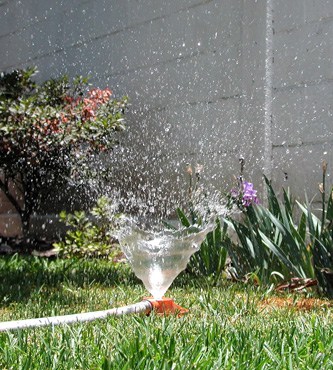
Keeping unwanted cats away isn’t always easy.
A common cat deterrent is the motion activated sprinkler. Once the cat enters the detection area a burst of water is shot out scaring the cat away.
Cat repellent sprays are available from pet supply shops and can be sprayed around your yard, fences and gardens.
Ultrasonic sound device emits sets of a high frequency sound alarm once the infra-red field has been
Reference
HOW TO TRAIN A CAT?
17th Most Popular Search with 2,900 searches per month
Whether you are wanting to teach a cat some new tricks or simply to correct some poor behaviour, training your cat isn’t as hard as you think.
It’s important to understand that cats don’t respond well to negative punishment. Positive encouragement and reinforcement are the most responsive methods for training your cat.
Reward you cat for positive behaviour with treats
Be consistent with rewards and make them a regular practice
Poorly behaved cats may be related to environmental conditions, such as another bullying cat, a new cat or dog in the home
To encourage your cat to use the litter box, make sure it is cleaned daily, placed appropriately within the home, cats prefer privacy without being confined.
Cats that have access to a scratching post are far less likely to destroy your furniture. Make sure the scratching post is suitably located within the home in a nice central location.
The use of sound devices is effective in deterring a cat’s bad behaviour. Whistles, cans, or bells can be used can be used to distract the cat as he is about to do something naughty.
Taste, smells and textures can also be used around the home to encourage or discourage your cat from behaving inappropriately.
WHY DOES MY CAT BITE ME?
18th Most Popular Search with 2,900 searches per month
Cats bite for a number of reason. Sometimes they are just playing, other times they are telling when they have had enough. But generally cats bite for the following reasons:
-
-
-
- As a form of play
- When felt threatened
- If the cat has had enough patting or playing
- If the cat in fearful or impatient
-
-
Reference
WHY DO CATS LIKE CATNIP?
19th Most Popular Search with 2,900 searches per month
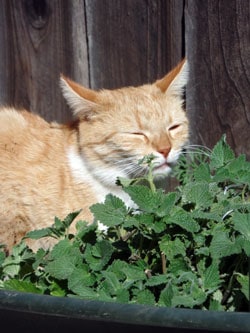
If you find that your cat is rolling around all over the ground, twisting, rubbing himself on the ground or even drooling you can be sure that he has been around Catnip.
Catnip being in the mint family and containing an essential oil called Nepetalactone which has a very strong impact which can turn even the laziest of cats into a fuzzy ball of mayhem.
Once smelt the cats are drawn towards the mint due to ‘happy’ feeling they get when they smell it, but once eaten it will make cats feel very chilled and mellow.
These sessions will last about 10 minutes, and according to studies only about 50% of cats react to Catnip.
Reference
-
-
-
-
- http://www.humanesociety.org/animals/cats/tips/catnip.html?referrer=https://www.google.com.au/
-
-
-
HOW TO INTRODUCE CATS (TO EACH OTHER)?
20th Most Popular Search with 2,400 searches per month
Many cat loving households have more than one day in there house. Cats can be playmates and even companions but the process of introducing cats to each other doesn’t always well and doesn’t happen overnight.
Follow these steps for a more positive outcome:
- Keep separated at first but in the same area
- Slowly let the cats see each other (if cats are hissing and uncomfortable then hold off the visual introduction for a while.
- Once cats are familiar with each other then let then make the face introduction (if the cats ignore each other for some time that is normal as they have to gauge whether the other cats in friend or foe)
Reference
WHY DO CATS EAT GRASS?
21st Most Popular Search with 2,400 searches per month
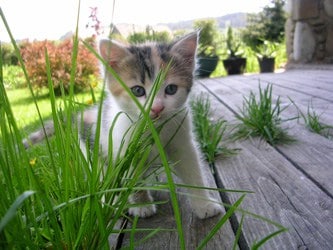
Whether your cat is an inside or outside cat, it has most likely nibbled on grass on more than one occasion and It is completely normal for your cat to do so and even throw up afterwards.
There is no evidence to show that is bad for the cat, in fact some studies have shown that it could be beneficial for your cat.
Cats throw up the grass due to the lack of enzymes to break down vegetable matter. You would think that cats don’t enjoy this experience after puking but studies show that feel a lot better afterwards.
Much like mothers milk, grass has lots of folic acid which is vitally important for moving oxygen in bloodstream.
Reference
HOW MANY TEETH DO CATS HAVE?
22nd Most Popular Search with 1,900 searches per month
Growing cats start their life with milk teeth which eventually fall out and are replaced with 30 strong chompers once fully grown.
Reference
- http://pets.thenest.com/many-teeth-cats-have-9053.html
HOW OLD IS MY CAT?
23rd Most Popular Search with 1,900 searches per month
It can be difficult to tell how old your cat is but here are some steps you can follow to find the rough age of your cat.
- Look at the condition of the teeth. Cats with pearly whites are normally younger than a cat with lots of tartar, missing teeth or tooth wear.
- Look at the cats eyes. If the cat is young then is the lens will be clear and white, but if the cats eyes are cloudy and has cataracts then you can presume that your cat is over 12 years.
- Look at the condition of your cats body. Younger cats are musclier and are in better shape while older cats have more of a belly and are bony on top.
HOW TO DISCIPLINE A CAT?
24th Most Popular Search with 1,900 searches per month
Cats can be hard to discipline and teach but following these simple steps then your cat troubles will be minimised.
Provide outlets for his needs.
- Placing outlet scratching posts around the house will let the cat do his usual scratching business and will stop the cat from scratching lounges, walls or anything he shouldn’t.
- Also give your cat chew toys and little balls which will help your cat use his inner instincts while not harming you or anyone else in the process
Reward good behaviour
- it is important to let your cat know when he does something good so it knows to do that again. Rewarding your cats good behaviour is wise as your cat will start to know what is good to do and what isn’t.
- Also not rewarding your cat but not hurting your cat when it does something wrong is good because cats don’t react to punishment or inflicted pain well, they will simply get angry and scratch you.
Play with your cat
- Also a way of rewarding good behaviour is to simply play and spent time with your cat. Not only will the cat enjoy this but the cat will build a stronger bond with you and will gain trust.
Reference
WHY DO CATS SNEEZE?
25th Most Popular Search with 1,900 searches per month
Cats sneeze for various reasons. If sneezing is the only symptom your cat shows like no discharge from eyes or nose, a good appetite and no change in behaviour or activity level then it is most likely of no concern. But, when ocular or nasal discharge is seen, the cat may have a cold or an upper respiratory infection.
An upper respiratory can be very difficult to get rid of without the help from medical staff and can sometimes even be fatal.
What to watch for:
- Sneezing
- Discharge from eyes or nose
- Coughing or a lot of swallowing
- Loss of appetite
- Fever
- Dehydration
- Raised third eyelid
How to care for your cat:
- Warmed canned cat food or meat flavoured baby food to encourage the cat to eat
- Provide fresh water for your cat to drink
- See at Veterinarian if the cat has a fever especially if the cat refuses to eat
Reference
http://www.petmd.com/cat/emergency/common-emergencies/e_ct_excessive_sneezing_nasal_discharge?page=2
HOW MUCH SHOULD I FEED MY CAT?
26th Most Popular Search with 1,900 searches per month
According to the Animal Medical Centre in New York the average 8 pound (3.6 kg) cat, requires roughly 240 calories per day.
Typically a cup of dry cat food contains about 300 calories and the average amount of calories in canned food in 250 calories. Proportioning the food for your cat into a few meals will keep your cat from over eating.
HOW LONG DO CATS SLEEP?
27th Most Popular Search with 1,900 searches per month
Typically the average cats sleep for about 16 hours a day, but can longer especially for kittens and seniors which normally sleep for about 16 hours.
HOW TO GET RID OF STRAY CATS?
28th Most Popular Search with 1,600 searches per month
Stray cats can be very annoying when they visit on a regular basis, but don’t worry here are some tips to get rid of them visiting.
Remove sources of food and shelter
-
-
-
-
-
- Feeding the unwanted cats will do nothing but fill there stomach and keep them coming back for more.
-
-
-
-
Remove other food sources
-
-
-
-
-
- Make sure that your garbage bins aren’t overflowing, and the lid is on tight and everything is secure.
-
-
-
-
Remove or block sources of shelter
-
-
-
-
-
- Cats are desperate for a warm, dry space for a shelter from the elements, so make sure you make it really hard for the unwanted cat/cats to access your yard, so they will just move onto the next yard or neighbourhood.
-
-
-
-
Reference
WHY DO CATS WAG THEIR TAILS?
29th Most Popular Search with 1,600 searches per month
Cats wag their tails for a number of reasons.
The position of your cat’s tail can tell you a lot about the mood of your cat, and usually the posture, position of the ears, whiskers, and facial expression, along with the position of the tail indicate the true mood or state of mind of your cat.
Generally, you can get a fair indication of how your cat is feeling by using the following indicators as a guide:
-
-
-
-
-
- Upright tail is a sign of happiness
- Wagging tail from the base is a sign of agitation
- Upright tail quivering back and forth – your cat may be spraying or marking territory
- Tail tucked between the legs is a sign of fear
- Arched and erect tail means the cat is ready to react usually in a defensive manner
- Lowered tail gently moving back and forth is a sign your cat is relaxed and content
-
-
-
-
Reference
- http://www.petplace.com/article/cats/behavior-training/understanding-your-cat/why-cats-wag-their-tails
- http://www.pet360.com/cat/behavior-and-training/cat-tail-wagging-what-different-wags-mean/l7vJPGbFh0Ob-jnsSeMhVg
HOW MANY KITTENS CAN A CAT HAVE?
30th Most Popular Search with 1,600 searches per month
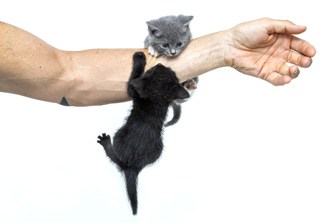
Cats reach puberty anywhere from 6 – 9 months old and can have between 1 – 8 kittens per litter, but on average it’s more likely to be 4 – 6 kittens per litter.
A healthy cat can will have 2 – 3 litters per year.
If you do the math, that means a single pair of cats and their offspring can produce a whopping 420,000 kittens over a 7-year period.
As the pregnancy develops, there are several signs one can look out for to determine cat pregnancy
- Female cats have 2 – 3 litters per year
- Female cats can give litter to over 100 kittens in her productive life
- Younger and older cats may have fewer kittens
Reference
- http://fayettehumane.org/fun-facts/
- http://www.ask.com/pets-animals/many-kittens-can-cats-52d2a02b3142a30f
HOW DO YOU SAY CAT IN SPANISH?
31st Most Popular Search with 1,300 searches per month
The word cat in the Spanish language is translated as Gato
Further translations include:
-
-
-
-
-
- noun
-
-
-
-
el gato – cat, jack, tomcat
la gata – cat
el feline – feline, cat
HOW MUCH TO DECLAW A CAT?
32nd Most Popular Search with 1,300 searches per month
Declawing cats is considered inhumane and has so many negative impacts on cats that they will never be the same after the massive surgery. This surgery is so cruel that it is illegal in the following contries:
-
-
-
-
-
- Australia
- England
- New Zealand
- Brazil
- France
- Italy and about 20 other countries
-
-
-
-
Reference
HOW TO FIND A LOST CAT?
33rd Most Popular Search with 1,300 searches per month
Losing your cat can be a scary and dramatic time especially if you were close to your fury friend, so here are some must try tips for a maximised chance of find your cat:
For an indoor cat
Determine the escape point
- Try and find a spot in the house like a slightly opened door where your cat might’ve snuck out of.
- Look for the closest hiding spot near your house
- Follow the perimeter of your house looking for any spots for your cat to be hiding, like under a deck or in the corner of a shed.
For an indoor/outdoor cat
When an indoor/outdoor cat goes missing the question isn’t so much “where’s the cat?” it’s more like “what happened to the cat?” because the typical cat has the same time schedule in terms of getting back home so something has most likely interrupted your cats schedule.
Some possible outcomes:
- Trapped
- Sick or injured
- Taken out of the area
- Stolen/taken by predators
Reference
WHY IS MY CAT THROWING UP?
34th Most Popular Search with 1,300 searches per month
After spending some time with your cat over a period of time, the chance of your cat throwing up is quite likely and is normal most of the time. A cat could be throwing up over something simple like eating a meal too quick, being nervousness, throwing up hairballs (for longhaired cats) and even being stressed.
But occasionally throwing up could be a sign of something very bad like an illness or a disease but most of the time the cat would have more problems than throwing up if it had a disease or illness.
Like:
- Lack of appetite
- Loss of weight
- Strange or abnormal behaviour
- Different sleeping pattern
- Breathing rate
- The sound of the cat’s meow
- The sound of the cats breathing
- The way the cat smells
Reference
HOW DO CATS GET WORMS?
35th Most Popular Search with 1,300 searches per month
It is very common for cats to get a variety of intestinal parasites and the most common parasite is worms and there are many ways cats can pick up these nasty things.
Cats can pick up worms practically anywhere so it is no surprise when a cat has worms.
- Cats can get worms by simply picking up or coming into contact with some eggs in the grass.
- If a cat stumbles into a random piece of meat and eats it
Another problem about your cat having worms is that this infection can spread to humans so it is very important to treat your cat ASAP.
Reference
HOW TO KEEP CATS OUT OF YARDS?
36th Most Popular Search with 1,300 searches per month
Stray cats can be very annoying when they visit on a regular basis, but don’t worry here are some tips to get rid of them visiting.
- Remove sources of food and shelter
- Feeding the unwanted cats will do nothing but fill there stomach and keep them coming back for more.
- Remove other food sources
- Make sure that your garbage bins aren’t overflowing, and the lid is on tight and everything is secure.
- Remove or block sources of shelter
Cats are desperate for a warm, dry space for a shelter from the elements, so make sure you make it really hard for the unwanted cat/cats to access your yard, so they will just move onto the next yard or neighbourhood.
Reference
HOW LONG CAN A CAT GO WITHOUT EATING?
37th Most Popular Search with 1,300 searches per month
Like almost every animal cats need water to survive, due to the cells in a cats needing water to function, and without water a cat wouldn’t make it past more than a few days.
In fact cats get a lot of their water from the food that they eat, so without food a cat’s life is in serious danger.
To put it bluntly, if the typical cat consumes nothing at all, it would only last a few (2-3) days. But if your furry friend drink water regularly then it will be able to survive for up to 2 weeks
HOW TO DRAW A CARTOON CAT?
38th Most Popular Search with 1,300 searches per month
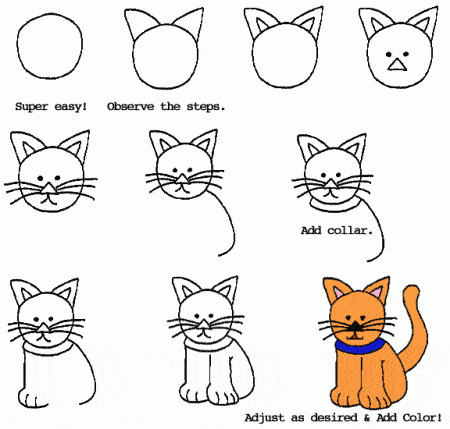
There are many variations to drawing a cat, but here is simple and effective step by step picture that shows you how to draw a cat.
Reference
-
-
- https://www.pinterest.com/pin/107101297358626309/
- http://www.purina.com.au/cats/behaviour/purring
- http://pets.webmd.com/why-do-cats-purr
-
HOW TO PET A CAT?
39th Most Popular Search with 1,300 searches per month
It may seem like a simple task to pet a cat, but it is important to know the dos and don’ts for touching a cat.
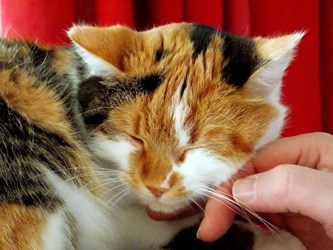
-
-
- Let the cat become comfortable with you after a few petting sessions
- Wait for the cat to bump her head against you
- Let the cat sit on you and pet it
- Pet the cat when its lying down on its sides because they love it
- Watch for signs that the cat doesn’t want to pet anymore and it be for a while
- Focus on between the ears of behind the ears
- Pet the cat just behind the whiskers
-
HOW TO TAKE CARE OF A CAT?
40th Most Popular Search with 1,300 searches per month
If you are first time cat owner then we know that I can be a stressful and daunting time if you are unsure of what to do in regards for taking care of a new or old cat.
-
-
- Consider whether you want a kitten or a fully grown cat
- After getting the cat encourage it to use a litter box (place the box in a quiet area)
- Provide the cat with a scratching post so it does scratch anything important like lounges
- Reward good behaviour with a treat so the cat knows to do it again
- Discourage the cat from exploring forbidden areas like counters by spraying the cat with some misty water from a spray bottle
- Don’t hurt but don’t reward bad behaviour because cats don’t react well to physical violence
- Feed your cat about twice a day using your desire cat product
- Cats require at least 240 calories a day (a cup of dry cat food contains about 300 calories, canned food normally has about 250 calories)
- Proportioning the food for your cat into a few meals will keep your cat from over eating.
- Brush your cats coat, especially long haired cats ( a couple of times a week)
- Schedule yearly vet visits ( more frequently for kittens)
-
Reference
HOW DO CATS MATE?
41st Most Popular Search with 1,300 searches per month
“How do cats mate?” Is a common question among cat owners and often comes as a shock to the owners of a female cat when it becomes pregnant.
The whole mating process is very similar to humans. The male has a hidden penis and when erect, enters the female body from behind and ejaculates inside of her.
WHY DO CATS HISS?
42nd Most Popular Search with 1,600 searches per month
“Why do cats hiss?” is a common question but can be easily answered. When a cat is hissing it means that it is unhappy about something and if you don’t leave it alone that kitty’s upset mood will turn into clawing and scratching.
WHY DO CATS DROOL?
43rd Most Popular Search with 1,300 searches per month
Cats aren’t massive droolers but the occasional drool is nothing to worry about. But if your furry friends has got a waterfall coming out of his mouth then it could be a serious problem. Here are some reasons your cat might drool:
-
-
-
-
-
- Mouth disease and tooth decay
- Trouble swallowing
- Heatstroke
- Motion sickness
- Organ disease
- Poisonous plants
- Upper respiratory infections
-
-
-
-
If your cat is constantly dribbling take it to the vet ASAP because it will most likely be one of these problems.
Reference
HOW TO LITTER TRAIN YOUR CAT?
44th Most Popular Search with 1,600 searches per month
Most commonly a cat would have learnt from its mother how to use a litter box, but for recently adopted feral cats this will be needed to be taught.
-
-
-
-
-
- Choose a large litter box because the more room for the cat the more comfortable.
- Decide whether to put the box inside or outside according to your preferences and also the cats.
Reference
- Find a good location for your cat because if he doesn’t feel comfortable he won’t use the box.
- Maintaining a clean box will increase the chance of your cat cooperating.
- Play with your cat near the box so it gets used to the environment.
- Place cat in box when it needs to go.
- Reward cooperation so your cat knows the do it again.
- Don’t punish bad behaviour because cats don’t learn from punishment.
-
-
-
-
Reference
HOW MUCH DOES IT COST TO SPAY A CAT?
45th Most Popular Search with 1,300 searches per month
Spaying a cat is the removal of the uterus, fallopian tubes and ovaries in the female cast to stop her from reproducing.
In Australia (2013) The cost to spay a female cat ranged from $195.00 to $250.00, with an average cost of $223.80. Expect slightly higher price if your cat is on heat or your female cat is already pregnant.
Reference
HOW TO KEEP CATS OFF FURNITURE?
46th Most Popular Search with 1,000 searches per month

Provide alternatives
-
-
-
-
-
- Like a comfy bed in a quiet spot in the house. Your cat will prefer the bed because it is in a quieter spot and is more desirable to a cat
-
-
-
-
Purchase a cat condo
-
-
-
-
-
- A cat condo is a multi-level structure which allow your cat/cats to jump, scratch, sleep and most importantly to be themselves to explore and climb. This will keep your cat off the furniture and will also allowing your cat to get some exercise.
-
-
-
-
Use treats to teach your cat were to sit
-
-
-
-
-
- Once providing an alternative spot in the house to the furniture reward your cat when on your desired kitty location. This will teach the cat to do this again to get more rewards and will eventually become a habit.
-
-
-
-
Reference
WHY DO CATS SNEEZE?
47th Most Popular Search with 1,000 searches per month
Cats sneeze for various reasons. If sneezing is the only symptom your cat shows like no discharge from eyes or nose, a good appetite and no change in behaviour or activity level then it is most likely of no concern. But, when ocular or nasal discharge is seen, the cat may have a cold or an upper respiratory infection.
An upper respiratory can be very difficult to get rid of without the help from medical staff and can sometimes even be fatal.
What to watch for:
-
-
-
-
-
- Sneezing
- Discharge from eyes or nose
- Coughing or a lot of swallowing
- Loss of appetite
- Fever
- Dehydration
- Raised third eyelid
-
-
-
-
How to care for your cat:
Warmed canned cat food or meat flavoured baby food to encourage the cat to eat.
Provide fresh water for your cat to drink, and see at Veterinarian if the cat has a fever especially if the cat refuses to eat.
Reference
WHY DO CATS HAVE TAILS?
48th Most Popular Search with 1,000 searches per month
Cat’s tails are surprisingly important for the cat as it serves as a number of purposes. In fact over 10% of cats bones are in there cat, which is about 20 bones.
Although some breeds are known of their shortened tail or even a complete absence of tail.
The tail is vitally important for:
-
-
-
-
-
- Keeping the kitty balanced when he walks across fences.
- Communication (tail position can tell us their current mood).
- Tail sucking is a throwback to kitten hood which is comforting for the cat.
-
-
-
-
HOW MUCH DOES IT COST TO NEUTER A CAT?
49th Most Popular Search with 1,000 searches per month
The average cost for a male to be neutered in Australia is between $40.00 to $80.00, and the average cost for a female cat to be neutered is between $60.00 to $120.00.
HOW TO SHAVE A CAT?
50th Most Popular Search with 1,600 searches per month
If you have a long haired cat, it will need quite a lot of grooming to prevent mats and tangles.
What you’ll need:
-
-
-
-
-
- A good pair of Clippers
- A Towel to avoid hair all over the ground
- Gloves (to avoid scratches)
-
-
-
-
Method:
-
-
-
-
-
- Trim its nails first to avoid scratches
- Test the sound of your clippers to see if your cat is scared of just the sound
- Hold down the cat firmly and hold the skin very taught to avoid cutting the cat
- Start at the top of the cats body and work your way down to the tail
- Work your way around the body of the cat
-
-
-
-
Tips:
-
-
-
-
-
- Avoid the tail
- Seek help if needed
- Take frequent breaks
- Check the temperature of the clippers to make sure they won’t burn your cat
-
-
-
-
Reference
HOW TO GET CAT PEE OUT OF CARPET?
51st Most Popular Search with 1,600 searches per month
It’s a real pain when a cat pee’s in the carpet, but here are some tips to get the stinky stain out of your carpet:
-
-
-
-
-
- If the pee is still wet, try to get as much as you can out with paper towels.
- If the pee is dry and you can’t locate it, turn off the lights and use a backlight to find where the dry pee is. The pee will glow green under the light.
- To wet pee use baking soda to draw out the urine, when the soda turns yellow, remove and reapply.
- Try combining one-part distilled baking soda and two parts warm water into a spray.
-
-
-
-
HOW TO CATCH A CAT?
52nd Most Popular Search with 1,000 searches per month
Here are three very important steps to catch a cat:
-
-
-
-
-
- Start feeding the cat a couple of days before you trap it.
- Set up the trap and bait it.
- Check the trap regularly.
- Take the cat inside and cover the trap with a sheet so the cat is more comfortable.
-
-
-
-
HOW TO KEEP CATS FROM SCRATCHING FURNITURE?
53rd Most Popular Search with 1,000 searches per month
Here are some tips to get your cat or cats to stop scratching your furniture:
-
-
-
-
-
- Use your tone of voice to correct the behaviour
- Make sure not to hurt the cat because the cat won’t react well nor will the cat learn from its mistakes
- Use water to stop your cat’s bad behaviour
- A squirt bottle is ideal when your cat scratches your furniture, to make it remember that the last time it scratched the furniture it lead to an unpleasant experience.
- Purchase a scratching pole
- Place the pole in a comfortable, quiet position for your cat so he can get all of its scratching on the pole rather than on your furniture.
-
-
-
-
Reference
HOW TO DRAW A CAT FACE?
54th Most Popular Search with 1,600 searches per month
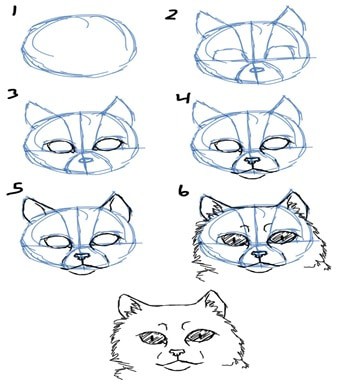
Here is a simple 6 step technique to draw a cat face.





